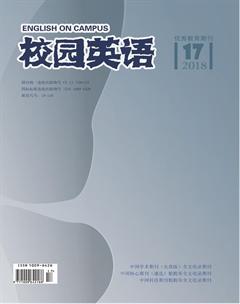On the Translation of Chinese Menus
【Abstract】The translation of Chinese menus plays an active role in spreading Chinese dietary culture. This paper attempts to explain to readers that (1) the translation principles of Chinese menus (2) the translation methods of Chinese menus. When we are translating them, we should follow some translation principles. They are (1) the principle of authenticity (2) the principle of terseness (3) the principle of transliteration (4) the principle of complementarity. We mostly adopt six methods(1) literal translation (2) free translation (3) transliteration (4) literal translation + explanation.
【Key words】Chinese menus; principle; method
【作者簡(jiǎn)介】王婷婷,山西省孝義市司馬初中。
The translation principles of Chinese menus
“Bread is the staff of life. ” The Chinese dietary art is so broad and profound. So to mastery the translation principles of Chinese menus, and translate the unique and chic Chinese menus correctly, have been very important to carry forward Chinese dietary culture.
The principle of authenticity
When foreign tourists go into Chinese restaurants, they prefer to know how and with what raw material the Chinese food is cooked. So the translators should translate out the truthful main materials, accessory materials, spices and cooking methods. E. g. 芙蓉魚片(fish slices with egg white),翡翠蝦仁(shrimp with green vegetables). (Wu, 2009)
The principle of terseness
The principle of terseness means the name of Chinese menus should be terse and convenient for foreign tourists. We should obey the language habits of foreigners. Compared with names of western dishes, the name of Chinese dishes are much longer. It cost foreigners much time to order the food. So we must obey the principle of terseness. E. g. 蓮子惹米燉鴨湯:duck soup with lotus seeds and barley (Zhu, 2002)蜜汁烤叉燒:barbecued pork (Xiong, 2004)
The principle of transliteration
Using the principle of transliteration, we can not only make the translation own Chinese culture characters, but also keep the original and implied meanings in the process of translation. E. g. 麻婆豆腐(mapos bean—card), 狗不理包子 (goubulibaozi). (Wu, 2009)
The principle of complementarity
Chinese menus not only taste color, fragrance and flavor, but also pursue the beauty of names. So people give them the literal names or the names with best wishes instead of the common way of “material + cooking methods + cutting”. For examples, “全家福” (happy family—combination of shrimps, pork, beef, chicken and mixed vegetables with brown sauce). (Yang, 2007)
The translation methods of Chinese menus
Literal translation
Some dishes are named with usual materials, so we should choose corresponding E. g. 玉米肉丸(meatball and corn). ( Ren, 2001) Some dishes are named with places names. When we are translating them, we should better add the place names to show the place that the food came from at first and reflected the culture of. E. g. 北京烤鴨(roasted Beijing duck). (Zhou, 2003)
Free translation
Some Chinese menus cant be found out their materials just from the names because of including professional jargon, figures of speech and associations. Mostly they carry the culture knowledge and usually they are named with animals, plants and numbers. While we are translating them, we should try our best to show their materials, cooking methods and so on. E. g. 炒雙冬(saute mushrooms and bamboo shoots). (Zhang, 2004)
Transliteration
The contact of culture between different countries is constantly enforcing. Now that hamburgers(漢堡包) can be widely accepted by Chinese, it is believed that Chinas jiaozi(餃子) tofu(豆腐) can be accepted by foreigners in the same way. E. g. 家常豆腐(tofu, home style)豬肉餃子(jiaozi of pork fillin )( Zhou, 2003)
Literal translation + explanation
There are some names of menus which are about historical stories or legends. When we are translating them, we translate them literally at first, and then explain the origins of them. For example, 叫花雞——beggars chicken (toasted chicken wrapped in lotus leaf and earth mud). Long long ago. . .
Conclusion
The traditional food of a nation reflects the historical culture characteristics of a nation. The Chinese menu shows widely the food culture of our country. As The translators, we should make our afford to give the names by keeping their culture. They should make sure that foreigners can accept the names and use them freely. The translators should also name the menus according to the usual methods to translate Chinese menus. All in all, making foreigners enjoy our delicious food is an important thing, and falling love with Chinese culture is the most important thing!
References:
[1]張?jiān)七_(dá).中式菜肴的特點(diǎn)及英譯方法[J].保山師專學(xué)報(bào),2004,(4).
- 校園英語·上旬的其它文章
- Study on the human resource training system of Shangri—La Hotel
- Analysis of the External Environment of Fitness Club
- Love Remains in the Human World
- Struggle between id and superego in The Black Cat
- An Analysis of The Building
- An Analysis of Stevens’s Alienation in The Remains of the Day Under Gaze Theory

